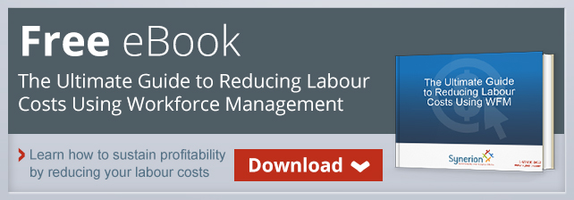
Unsurprisingly, the highest costs incurred by most organizations are labour costs. People are the component of a business that determines its success; thus, investing in the right talent is simply an effective way to help propel your business to new levels. That said, in many cases labour costs become too high, and cost reduction strategies that are implemented often identify the need to drive down expenses in this area.
But how is it possible to do this, apart from having to downsize? This is a challenge many organizations face, and all too often they find themselves relying on short-term solutions – such as layoffs – that in the grand scheme of things end up harming the business. A better strategy, from both an organizational and employee perspective, is to seek alternatives that help significantly reduce costs, while allowing members of the workforce to remain in their roles. Here are 3 of the best kept secrets to cutting your labour expenses, without having to downsize.
_________________________________________________________________________
1. Automate Manual Processes
The majority of organizations that experience labour cost issues typically have a Human Resources department that handles their workforce. Too often, HR is burdened with a high volume of time-intensive, manual systems to manage processes. The issues with such processes are multiple:
- They are error-prone
- They are time intensive, consuming hours that could be better used toward more role-critical tasks
- They make tracking labour-related metrics, such as overtime or compensation, difficult to accurately manage
An automated system helps reduce labour expenses, lessen the risk of errors, while also allowing the workforce to focus more on their roles and less on manual administrative tasks.
_________________________________________________________________________
2. Tighten Time and Attendance Tracking
A big mistake of organizations that directly impacts the bottom line is poor time and attendance tracking. Consider the following:
- Studies have found that up to 35% of payroll costs are linked to absences
- Excessive overtime (often unauthorized) is one of the main issues that drive labour costs up
- Improper tracking of absences, vacations and hours worked may not only increase costs, but also result in noncompliance with labour laws and regulations.
With the right management system, the high costs that result from the above issues can be significantly reduced, allowing your company to manage policies correctly while minimizing any compliance risks.
_________________________________________________________________________
3. Cut Down on “Buddy Punching”
Buddy punching is when an employee punches the time card of another employee who is late or absent. It may not seem like a big deal at first glance, but buddy punching can actually increase payroll expenses by over 2%, on average. If you use a manual time card system to track attendance and hours, your company could be losing a lot of money in the long run. With a more accurate system, such as a biometric time clock or an integrated workforce management solution, you can eliminate buddy punching and increase the accuracy of time and attendance records.
_________________________________________________________________________
The result of these changes is beneficial for both the organization and the employees within. Not only are labour expenses reduced, but they are done so in a way that allows workers to retain their roles. Furthermore, these changes serve to identify and correct the underlying issues affecting labour cost efficiencies, meaning they encourage a long-term, big-picture solution.
